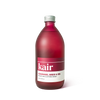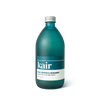Washing machine cycles explained
Most modern washing machines have a large selection of wash cycles to choose from - but how do they differ, and which should you choose? All cycles have a washing stage, then a rest period, a rinse, and finally a spin to remove the water (though sometimes more than one rinse and spin cycle to get clothes extra clean). Most machines have a regular cycle (or normal or cotton), a permanent press cycle (or colours) and a delicate cycle. Some also have a separate hand wash cycle for ultra-delicate items, and a bulky cycle for blankets or pillows. With so many buttons, dials, symbols and settings, choosing the right washing machine cycle may feel like a game of Russian roulette. But selecting the right cycle is as important as choosing the right water temperature - it’s what determines the movement, or agitation, inside the machine.
Regular, normal, or cotton
The regular wash cycle (a.k.a. ‘normal’ or ‘cotton’) is the lengthiest and most intense cycle, with high agitation in both the spin and wash cycles. It effectively removes stains and dirt, and is ideal for everyday wear, such as T-shirts, tops, socks, underwear, sheets and towels, and made of cotton, linen or durable synthetics, as well as heavily soiled items. If the cycle asks you to specify the water temperature, either follow the instructions on the care label, or choose hot water for whites (40-60°C), and cool for colours (20-30°C).
Permanent press or colours
The permanent press cycle - a product of the 1940s and advent of synthetics and wrinkle-free clothing. It’s shorter than the regular cycle, with fast agitation in the washing stage but a slow spin, and ideal for jeans, as well as many polyester and non-cotton items. You can also use permanent press on natural fibres which are prone to wrinkling, as the combination of warm water with a slower spin effectively releases existing creases. But beware - it’s not a substitute for a delicate wash, or for anything labelled ‘hand wash only’.
Delicates or hand wash
The delicates wash cycle is the machine-equivalent to hand washing. It’s the shortest and gentlest cycle, with slow agitation in the washing stage and low or no spin. It uses either warm or cool water, though we recommend keeping it cool, and if the machine defaults to warm water, you can easily override this by choosing cold water instead. It’s perfect for laundering delicate fabrics - from wool, silk, lace, lingerie, hosiery and delicate synthetics, to wool, cashmere, merino, faux fur and knits - though feel free to throw in lightly soiled cottons and synthetics too. Always err on the side of caution if you’re unsure, which means defaulting to delicate treatment, then upscaling where necessary. And be sure to always use a mesh laundry bag, to protect against snagging and show your clothes proper Kair.
Other cycles
Some machines have a separate hand wash cycle for ultra-delicate items, and a bulky cycle for blankets or pillows, as well as additional cycle options such as ‘Heavy Duty’ or even ‘Whitest Whites’, which provide a pre-soak and add extra water. Select one of these in addition to a standard washing machine setting (regular, permanent press, delicates) to intensify whichever cycle you’re using (for example, when washing very heavily soiled items). But always take Kair - machines vary in their washing intensity, efficiency, capacity and other features. Always follow the instructions on the care label.
Spin Speed
Spin speed is preset with particular washing cycles, measured in RPM or ‘revolutions per minute’. The standard spin speed is 1200/1400 RPM, which accompanies the regular wash cycle, and will suit most washing loads. Permanent press is lower at 800/900 RPM, and delicates lower still at 400/500 RPM. That means, for the majority of the time, there’s no need to manually change the spin speed: your machine will automatically adjust it depending on the cycle. But you may want to change it yourself, for example, if you’re stuck for time, and want a quick wash (a higher spin also speeds up the drying process). But always be mindful of the fabrics you’re washing: while everyday fabrics like cotton can tolerate a faster spin, denim should stay around the 800/900 mark, and delicates like silk should always be washed on a low spin, to avoid damaging and weakening the fibres.
If you know the fabric content of your clothes (which you can check by reading the garment labels), it should be plain-sailing to know which cycle to use. So, take our expert advice for a spin, and say goodbye to your old dial dilemmas.
Remember, our laundry products do more than just clean your clothes. They are kind to them, and they are kind to the planet too. We’ve worked hard to change the game - see for yourself here.
Cover image by Mr Maid

















